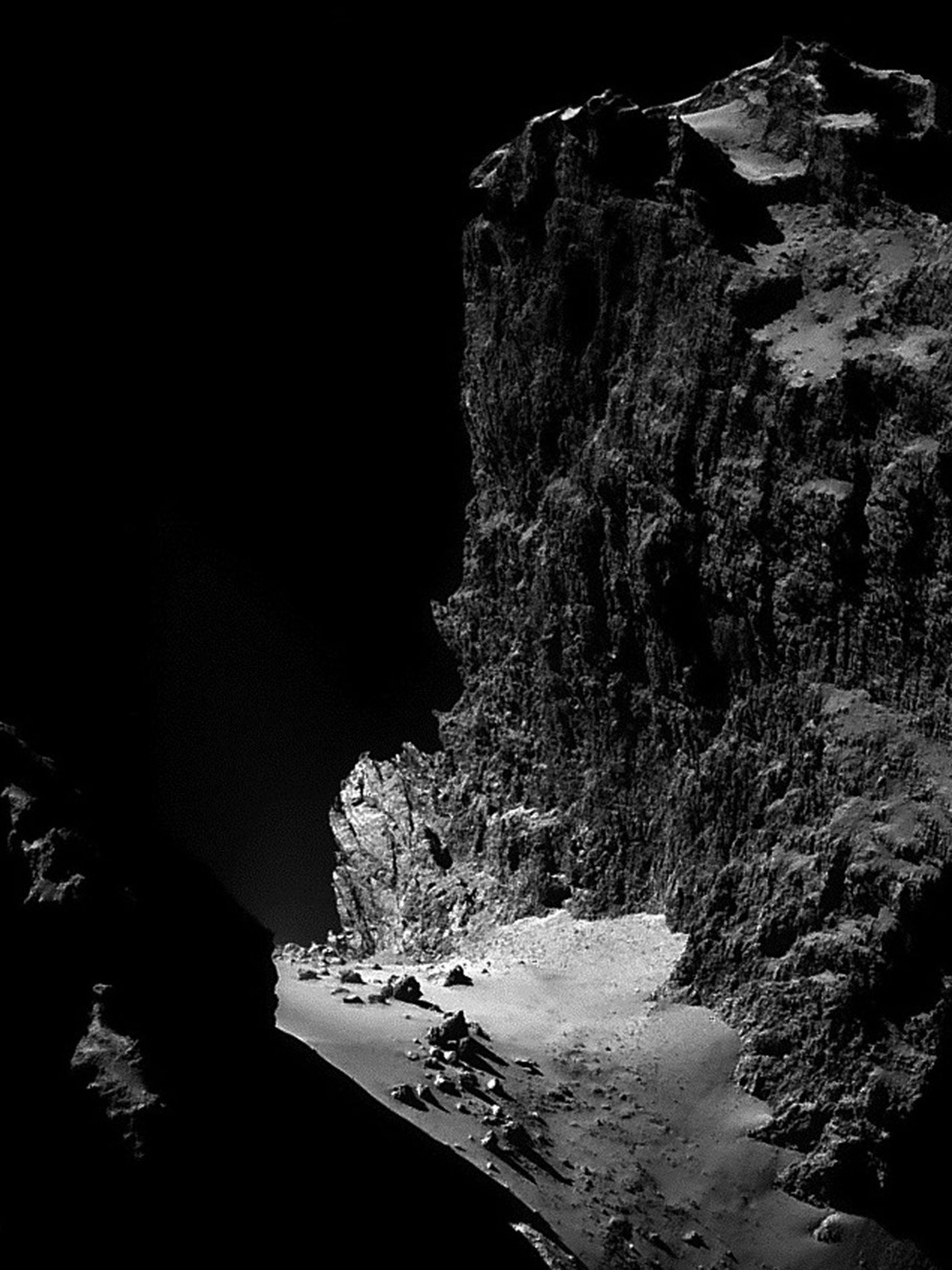Rosetta captures steep one kilometre cliffs and boulder-strewn terrains on comet's surface
Low surface gravity of Comet CG means human would survive jump from cliff

Your support helps us to tell the story
From reproductive rights to climate change to Big Tech, The Independent is on the ground when the story is developing. Whether it's investigating the financials of Elon Musk's pro-Trump PAC or producing our latest documentary, 'The A Word', which shines a light on the American women fighting for reproductive rights, we know how important it is to parse out the facts from the messaging.
At such a critical moment in US history, we need reporters on the ground. Your donation allows us to keep sending journalists to speak to both sides of the story.
The Independent is trusted by Americans across the entire political spectrum. And unlike many other quality news outlets, we choose not to lock Americans out of our reporting and analysis with paywalls. We believe quality journalism should be available to everyone, paid for by those who can afford it.
Your support makes all the difference.The steep, ragged cliffs and boulder-strewn terrains on the surface of Comet Churyumov–Gerasimenko (Comet 67P) have been captured in images taken by the Rosetta spacecraft.
Rosetta, a space mission which has for the first time put a spacecraft in orbit around a comet and landed a robotic probe on its surface, is orbiting Comet 67P from a few miles away and sending data back to the European Space Agency mission control in Darmstadt, Germany.
The rugged cliffs and patches of smooth terrain were then identified by Stuart Atkinson, a British amateur astronomer, who zoomed in on views published by the ESA.
Mr Atkinson said “Christmas came early” on his blog when his picture was chosen as Nasa’s Astronomy Picture of the Day.
The stunning shot of ragged cliffs featured in the image were taken about two weeks ago. Despite being so high, the low surface gravity of Comet 67P means a jump from the cliff by a human would probably be survivable.
At the foot of the cliffs is relatively smooth terrain scattered with boulders measuring up to 20 metres across.
An instrument on Rosetta has already detected water, methane and hydrogen as well as rarer molecules such as formaldehyde and hydrogen cyanide, findings that could indicate whether comets delivered the vital ingredients of life to the early Earth.
Rosetta is scheduled to continue to accompany the comet as it makes its closest approach to the Sun in August next year.
Join our commenting forum
Join thought-provoking conversations, follow other Independent readers and see their replies
Comments